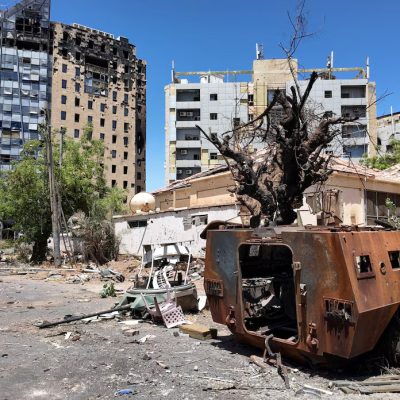19th of May 2019
Background
In September 2008 Israel asked US for green light to bomb nuclear sites in Iran. The US president told Israeli prime minister he would not back attack on Iran, senior European diplomatic sources tell Guardian at that time. Later, tried again but it met a lot of obstacles especially when the The US “Democratic” politician Mr. Barack Obama was elected the president of the United States in January 2009.
President Obama in coordination with the other four permanent states in the United Nations Security council (UNSC), Europe Union (EU) and Germany started a new step of negotiations with Iran and successfully reached a final nuclear agreement so called “Joint Comprehensive Plan of Action (JCPOA)”. It’s worth to be mentioned that Iran earlier succeeded in completing about 80% of its nuclear program. The JCPOA was posted on a separate electronic page at the White House official website. Accordingly, lifting sanctions on Iran and releasing its frozen assets started. On other side, the JCPOA was entirely against the will of Israel and the Gulf Cooperation Council (GCC). I remember when the Israeli Prime Minister Benjamin Netanyahu said, “Obama is an enemy to Israel”; however, Mr. Netanyahu increased the annual US military aids to Israel in September 2016 to $3.8 Billion.
In January 2017 the “Republican” businessman Mr. Donald Trump was assigned to replace President Obama (his political archenemy) to turn things upside down with huge pressure from Israel and Saudi Arabia. President Trump decided to withdraw the US from the JCPOA and removed the electronic page containing the JCPOA terms from the White House website; then he announced the need for Iran to return to the negotiation table on the JCPOA (which Iran has completely rejected). President Trump administration continued their actions to isolate Iran and tightened sanctions against it in return for several charges, most notably that Iran supports instability in the region, interferes in the internal affairs of its countries and insists on the manufacture of banned plastic missiles.
But the remaining five countries of the JCPOA as well as the European Union, insisted on continuing the JCPOA with Iran. The Israeli Prime Minister Benjamin Netanyahu offered documents to the United Nations to condemn Iran and its nuclear program in front of the international community.
President Trump, through a tight plan, increased the pace of economic sanctions on Iran. The US decided to punish any company that would deal with Iran, just as it had done with North Korea at an earlier time.
President Trump then called on the Gulf states to increase their oil production in preparation to decrease the oil price.
Current situation
With the deteriorating economic situation of Iran in several areas it became possible to rush Iran to take aggressive actions against its opponents., this possibility Iran has increased when Iran moved some of its naval forces towards the Strait of Hormuz, which controls the exit of the largest proportion of oil to the world, declaring that it may close the Strait as a an option.
During the first week of May The U.S. said it’s sending an aircraft carrier strike group and bomber force to the Middle East to send an “unmistakable message” to the Iranian regime, citing “a number of troubling and escalatory indications and warnings” it suggested were linked to Tehran. “The United States is not seeking war with the Iranian regime, but we are fully prepared to respond to any attack, whether by proxy, the Islamic Revolutionary Guard Corps, or regular Iranian forces,” National Security Advisor John Bolton said in a statement Sunday night.
Four B-52H Stratofortress bombers took off from the Barksdale Air Force Base in Louisiana to land at the US military base in Qatar. They have been deployed to the region within a carrier strike group centered around the aircraft carrier USS Abraham Lincoln, a guided missile cruiser and four guided missile destroyers). The buildup of forces in the area, according to U.S. Central Command, reported by Military Times, is in response to “recent and clear” indications that Iranian or proxy forces were making preparations to “possibly attack American troops in the region.” CENTCOM reported that indications pointed to “threats on land and in the maritime” against U.S. forces.
Apparently, the main US political strategic goals could be as follows:
– To deter Iran and major competitor powers; and proving the US power in the region.
– To force Iran to return to negotiate the JCPOA considering the new US terms.
– To show that the US is ready in anticipation of any hostile action by Iran.
– To show that the US is ready in anticipation of Iran’s failure to comply with US sanctions.
Tactical reactions
On Sunday, 12th of May 2019, the UAE Foreign Ministry said four commercial ships (two Saudi oil tankers, one Emirati oil tanker and one Norwegian oil tanker) were subject to “sabotage operations” near the territorial waters of the United Arab Emirates in the Gulf of Oman, East of Fujairah, without causing casualties. Earlier the government of Fujairah denied media reports about blasts inside the port and said, “the facility was operating normally”. This was a respond to some Iranian affiliated news agencies which announced earlier on the same day that explosions were monitored near Fujairah seaport.
In this regard, I envisage three possible scenarios could be behind these processes:
First: The sabotage operations could be carried out by elements of Iranian special forces, any of its proxy forces or by crews of ships engaged in piracy and smuggling, which used to communicate with Iranians did this sabotage operation, in order to show that the security of Gulf states is fragile.
Second: By armed groups (terrorists) funded by one of the parties that seek to carry out a strong military strike against Iran, such as Israel, for example.
Third: By terrorist groups aiming the outbreak of a major war in the region to prepare the conditions for the resumption of its activities.
All of the three temptations are preliminary and according to the information available by news agencies and official sources.
On Tuesday, 14th of May Saudi Energy Minister Khalid Al Falih said that two oil pumping stations for the East-West pipeline had been hit by explosive-laden drones, calling the attack “an act of terrorism” that targeted global oil supplies. Houthis declared their responsibility.
The US Central Command sees both attacks against commercial oil tankers in the southern Arabian Gulf and the Houthis attack against Saudi Arabia as “tactical reaction”, and it’s not logic to respond with strategic strikes using B-52H bombers or F- 35 For example.
Political reactions
On Tuesday, 7th of May Iran announced its partial withdrawal from the nuclear deal (JCPOA) signed with world powers in 2015, a year after Donald Trump pulled out of the agreement. It means it may continue in its nuclear program, which is considered a big mistake that could provoke the European Union and the superpowers that signed the agreement.
On Wednesday, 15th of May U.S. ordered partial evacuation of its Embassy in Baghdad, it urged ‘non-emergency’ staff to go out of Iraq avoiding. Other European countries also warned their embassies. The US warning was not a preparatory phase before declaring war against Iran; it was security warning fearing of possible kidnapping risk and aggressive actions could be taken against the embassy and the consulates in Iraq by pro-Iranian armed elements.
During third week of May Iran’s Foreign Minister started his visits to Beijing and Tokyo trying to save 2015 Nuclear Accord (JCPOA) and seeking support for Tehran’s political situation. On the other hand, Tokyo, Doha and Swiss were and still paying their efforts to mediate between Washington and Tehran to calm the situation down.
On Saturday, 18th of May Saudi Arabia declared that the kingdom and other Arab countries have agreed to a request from the United States to redeploy U.S. forces in the Arabian Gulf. KSA confirmed that it’s not to do an action that help facilitate a war with Iran, but ‘to thwart possible Iranian attacks.
I think that this action could be one or both of the following:
First, to proceed major joint military exercises involving mainly maritime, ground air forces from US, KSA, UAE and other Arab countries of the US allies in the region.
Second: to protect, secure and tighten control of key strategic areas and objectives such as Strait of Hormuz, Straits of Bab al-Mandab, major seaports, airfields, oil stations and important infrastructures of the allied countries in the region.
Five actions before the outbreak of war
From the above, I believe that President Trump and his administration planed, in coordination with Mr. Netanyahu, to implement five main actions against Iran to inforce Iran to return to the table of negotiation on the JCPOA before adopting the most dangerous and the least likely course of action (the war on Iran). The Five actions are as follows:
First: the US withdrawal from the JSPOA (the nuclear agreement with Iran).
Second: The new US severe sanctions on Iran.
Third: labeling Iran’s Revolutionary Guard as A foreign terrorist organization by the US.
Fourth: the first deployment of US naval and air force units in the Arabian Gulf.
Fifth: the second deployment of US forces having huge naval, air and ground forces in the region.
Obstacles to the possibility of war
First: unstable political and security environment of the region (wars in Yemen, Syria and Libya – remaining spread of terrorism – Russian and Chinese existence, etc.).
Second: the expected imbalance of casualties; comparing the internal strategic depth of Iran and Israel shows that 10 targets in Israel may equal 100 targets in Iran.
Third: Since January 2017 President Trump has repeatedly stated that the US would never involve in any war doing the same mistakes of the previous US presidents.
Fourth: The refusal of the major powers to increase tension in the region, especially a direct war with Iran, which severely affects their interests.
Sayed Ghoneim, Major General (retired)
Fellow, Nasser Higher Military Academy
Chairman, IGSDA
www.igsda.org





